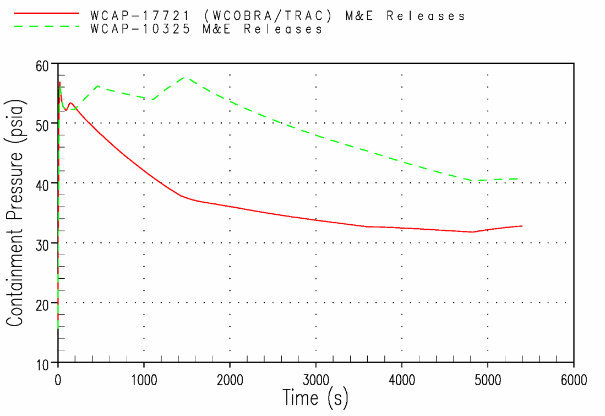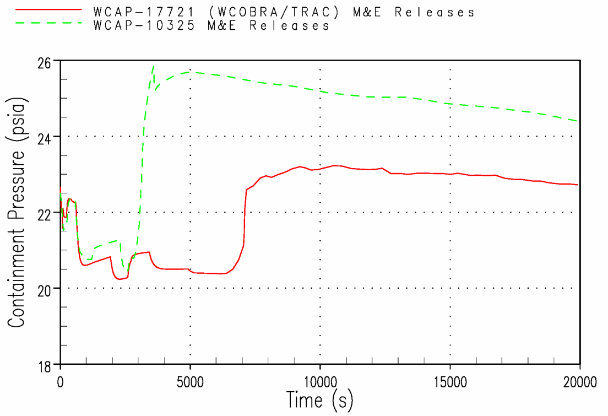Westinghouse has performed loss of coolant accident mass and energy release calculations (LOCA M&E calculations) for nearly 40 years. Westinghouse has significantly improved its capabilities with the development of the WCOBRA/TRAC LOCA M&E methodology.
In October 2015, the U.S. Nuclear Regulatory Commission approved Westinghouse’s new WCOBRA/TRAC LOCA M&E methodology (as described in Westinghouse report WCAP-17721-NP-A), which mechanistically calculates the M&E releases resulting from a large break LOCA using a highly sophisticated model of the reactor and loops.
Relative to older methodologies, the mechanistic calculation allows for a more realistic transfer of reactor coolant system (RCS) energy to containment. At a given set of operating conditions, this release of stored RCS energy can yield less limiting containment results in terms of temperature and pressure, thereby providing analytical margin that can offer operational flexibility.
For a large dry or sub-atmospheric design, the following improvements can be expected:
Ice condenser plants can expect the following benefits:
The margin gained in applying the WCOBRA/TRAC LOCA M&E methodology may also allow plants to operate with more restrictive conditions, such as:
Westinghouse has performed WCOBRA/TRAC LOCA M&E calculations for several operating plants. The new analyses have been successfully incorporated into the plants’ licensing bases.

Large dry containment LOCA containment pressure comparison – WCOBRA/TRAC vs. current methodology

Ice condenser containment LOCA containment pressure comparison – WCOBRA/TRAC vs. current methodology